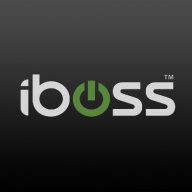


Omada Identity and JumpCloud compete in the identity governance and device management space. Omada Identity appears to have the upper hand in governance and integration with Microsoft technologies, while JumpCloud is more robust in device management and flexibility across platforms.
Features: Omada Identity provides strict governance and customizable identity-management features with seamless Microsoft integration, automated provisioning, and lifecycle management. JumpCloud excels in comprehensive authorization, device management, and offers single sign-on with SAML authentication for diverse system integration.
Room for Improvement: Omada Identity needs better UI flexibility, improved connector availability, and enhanced technical documentation. Its SaaS version lacks the adaptability of the on-premises solution. JumpCloud could enhance policy management, resolve Microsoft 365 synchronization issues, and improve device compatibility.
Ease of Deployment and Customer Service: Omada Identity provides multiple deployment options, but users report on-premises setup complexity and mixed support experiences. JumpCloud, being cloud-centric, offers simpler deployment and generally positive support, though response times and documentation could improve.
Pricing and ROI: Omada Identity has a high initial cost with competitive maintenance pricing, focusing on reducing help desk tickets and enhancing ROI through automation. JumpCloud's subscription-based pricing is seen as reasonable, especially for startups, though costs rise with user needs. Its ROI is noted for reducing hardware expenses and simplifying IT management.



iboss offers a comprehensive security platform designed for diverse use cases such as web filtering, data loss protection, corporate proxy services, and URL filtering.
iboss integrates advanced features to address dynamic security needs, leveraging its strength in SASE, ZTNA, AI initiatives, and cloud integration, while ensuring seamless operations for remote work. It excels in historical forensics, malware protection, and flexible cloud deployments. Users benefit from comprehensive traffic scanning, robust malware detection, and PaaS capabilities that reduce hardware management. An intuitive admin console ensures efficient management with content filtering and low false positives. SSL decryption enhances security, while DLP protects data in AI conversations. Deployment is rapid and scalable, allowing effortless integration with emerging technologies.
What features does iboss offer?
What benefits and ROI should users consider?
iboss finds significant application in sectors such as education, where web filtering for K-12 is crucial, and in corporate environments requiring robust proxy services and URL filtering for network security. Its adaptability is essential in scenarios demanding flexible, decentralized security frameworks, particularly for remote work setups.
JumpCloud enables organizations to manage devices, users, and applications across platforms like Windows, Mac, Linux, iOS, and Android. It offers centralized authentication, identity and access management, single sign-on, directory services, security policy enforcement, and cloud service integration.
Organizations leverage JumpCloud for its robust device management, policy management, and seamless integration with applications such as Microsoft 365 and Google Workspace. Its flexibility, stability, scalability, and ease of use make it a strong choice for managing business directories, executing scripts on-demand, synchronizing system access, and implementing mobile device management. Key features include remote access, Windows Out of Box Experience, strong authentication and authorization controls, centralized user and device management, efficient onboarding and offboarding processes, and extensive security and reporting features.
What are the most important features?In specific industries, JumpCloud is utilized to manage a wide array of tasks such as automating administrative functions in healthcare, ensuring secure access to sensitive data in finance, and supporting remote work needs in technology sectors. Its ability to integrate with diverse platforms and provide centralized control makes it suitable for managing complex IT environments.
Omada Identity is an identity governance and administration (IGA) solution designed to help organizations manage and secure digital identities and access across their IT environments. It focuses on enhancing security, compliance, and efficiency by automating identity management processes.
Omada Identity offers a robust set of features that streamline identity lifecycle management, access governance, and compliance reporting. It integrates with a wide range of IT systems, applications, and data sources, providing a centralized platform for managing user identities and access rights. The solution enables organizations to enforce security policies, ensure regulatory compliance, and reduce the risk of unauthorized access.
What are the critical features of Omada Identity?
What benefits or ROI items should users look for in the reviews when evaluating Omada Identity?
Omada Identity is widely adopted across various industries, including healthcare, finance, and manufacturing. In healthcare, it helps protect patient data and comply with regulations like HIPAA. In finance, it ensures compliance with SOX and other financial regulations. In manufacturing, it secures access to sensitive production data and intellectual property.
Pricing and licensing for Omada Identity are typically based on the number of users and the specific features required. Customer support is available through various channels, including online resources, support tickets, and professional services for implementation and customization.
In summary, Omada Identity is a comprehensive IGA solution that enhances security, compliance, and efficiency in managing digital identities and access.
We monitor all Identity Management (IM) reviews to prevent fraudulent reviews and keep review quality high. We do not post reviews by company employees or direct competitors. We validate each review for authenticity via cross-reference with LinkedIn, and personal follow-up with the reviewer when necessary.